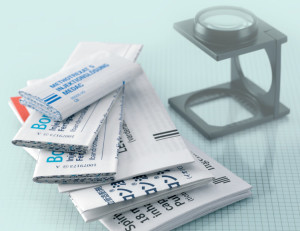Translation Validation for Medical Devices

Labeling for foreign markets can be tough for medical device manufacturers. As regulatory regimes crop up like mushrooms around the globe, specific country requirements in each language often require some serious label localization.
The process begins with internationalization, where English-only documentation is made translation-ready. Otherwise, when translation of these labels and other packaging information is done as an afterthought, problems will ensue.
With the tendency of translation to expand from English, the limited space on IFUs and the limited attention span of busy readers, the Goldilocks dilemma of copy length becomes critical. It’s got to be translated just right, not too short for safety’s sake and not too long to fit the page or in a busy reader’s imagination. This is just one of the reasons why validation planning is critical for patient safety and litigation costs.
The purpose of translation validation is not to correct grammar, spelling or other linguistic errors—this should have already been done by the team of translators, editors and proofreaders (we call it TEP). Translation validation for medical devices is about ensuring that terminology and style are correct in the context of a particular device’s usage.
Even translators with years of experience translating in a specific field generally do not have the day-to-day knowledge of how a particular medical device is being used in hospitals and medical clinics. At Responsive Translation we use the same specialists for the same clients in the same device class so that our translators are bringing a great deal of experience to the process. Rigorous attention to validation findings is required to ensure that documentation will meet the needs of both physician and end user.
Some of the questions to consider about translation validation for medical devices are: who will set the correct terminology for the device in each country and validate the translations to ensure that it is technically accurate? Should a company rely on a distributor or staff from the in-country office, or should QA talk directly to physicians or medical specialists in each country?
Many firms check accuracy by using their own validators. Sometimes called an in-country review, documentation or other translated material is reviewed by an independent, native speaker from the market country. Ideally this will be a physician or medical specialist or someone with experience in a specific field. Other applications may require readability testing. In some cases, particularly for e-medical applications, user interface testing is required to ensure that the translation makes sense in the context where it will be used.
For those of you planning your own validation systems, these are some of the approaches we’ve seen our clients take, in order of escalation:
1. In-country usability validation with representative users.
2. In-country expert validation: Full functionality and usability validation testing by a qualified practitioner in the target country.
3. Expert-assisted linguistic validation: Linguists conduct validation protocol under supervision of a device expert.
4. Linguist review validation: Expert trained linguists carry out validation on device or a device emulator.
5. Linguist validation: Linguists review documentation, source and target and conduct self-guided validation.
For more personalized consultations and planning, call 1-800-872-6752 (or +1-212-818-1102 outside the US). For even faster service, ask for Kenneth Richard Clark.
